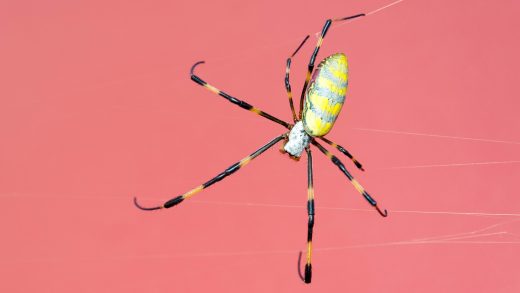Giant venomous spiders are the latest invasive species. Why are we getting so many?
Giant venomous spiders are the latest invasive species. Why are we getting so many?
In recent years, we’ve also seen spotted lanternflies and multiple broods of cicadas take up residence where they don’t belong. Could climate change be to blame?
BY Sarah Bregel
Summer has arrived, and if you’re extra worried about spending time outdoors this year, well, we can’t blame you. Between the crushing heat waves already spreading across the U.S. and a slew of invasive insects doing the same, the indoors doesn’t look half bad. But while we know that global warming is to blame for the heat waves, what about this seemingly surging array of insects?
Between plant-damaging spotted lanternflies, various broods of buzzing cicadas, and now, some giant flying venomous spiders coming out of the woodwork, the number of invasive species seems to be rapidly trending upward. And unfortunately, the latest batch of insects sound fairly unpleasant.
Earlier this year, New Jersey Pest Control warned of an invasion of Joro spiders. The terrifying-sounding creatures will be “hard to miss,” the company noted, as females have a leg span of up to 4 inches and are known for their vibrant yellow and grey bodies.
“What sets them apart, however, is their ability to fly, a trait uncommon among spiders,” the company said. “While not accurate flight in the avian sense, Joro spiders utilize a technique known as ballooning, where they release silk threads into the air, allowing them to be carried by the wind.” The spiders are believed to have come from Japan, with the U.S. epicenter in Georgia. Until now, as they’re spreading northward to more states.
The spiders’ presence is being closely monitored and studied so that scientists can better understand their impact. However, yet another invasive species arriving this year, and an unpleasant one at that, begs the question: What’s with all the darn bugs?
According to the North American Invasive Species Management Association, climate change and extreme weather events are exacerbating the spread of many different kinds of invasive species. But those species can then, in turn, worsen climate change. In a call to action, the organization’s website underscores a variety of different environmental issues that can be caused by invasive species, from negatively impacting climate change mitigation efforts to reducing carbon sequestration rates in forests to decreasing the resilience of green infrastructure to resist flooding, and more.
Climate change “is definitely [a] factor” in the upward trend of invasive species, agrees Matt Fitzpatrick, a professor at the University of Maryland Center for Environmental Science. “Climate change stresses native ecosystems while also creating opportunities for the establishment of new invaders in new places that [may have] otherwise been too cold.”
Chiara D’Amore is the founder and executive director of the Maryland-based Community Ecology Institute and holds a doctorate in sustainability education. She says that invasive species will migrate to favorable conditions if they’re able, which isn’t always the case. Most insect and animal species are “stuck in their environment, even if it doesn’t suit them well anymore,” D’Amore explains. That’s true “unless people make it possible for them to move to a new area where they can better thrive in the conditions.”
D’Amore says not to fear these flying insects, as they’re fairly docile. Recent research supports the claim. The bigger risk is that they could displace native spiders if they eat too much of their prey.
“One of the ways that people think this spider could be affecting other species is that it’s aggressive and out-competing all the other native spiders,” says Andy Davis, lead author of a study on the species from the University of Georgia, and a research scientist in the university’s Odum School of Ecology.
But the issue of invasive species is nothing new, explains Fitzpatrick. They’ve “been a problem for as long as humans have had the ability to move great distances across the planet,” he says. “Today we move goods and people rapidly across the globe, and like a game of Russian roulette, it is just a matter of time until a new species gets a foothold in a new place.
“I think what has changed recently, if anything,” he adds, “is a greater awareness of the problem.”
ABOUT THE AUTHOR
(22)



